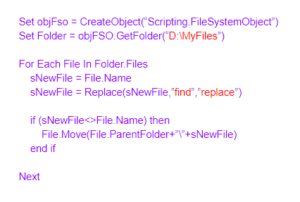Do you own an Olympus, Leica or Fujifilm digital camera and plan to share your photos with friends and family? Or are you trying to build an online photo album and share it on social media? If yes, sit back and take a moment to read this guide. Before you share the beautiful moments of your life, we’ve some helpful tips to improve the photo organization and viewability.
Product Spotlight: Easy File Renamer (EFR) — Now rename all your Olympus, Leica, Fujifilm photos using 10+ renaming-methods. EFR is a companion software to Clone Files Checker. Both these tools are programmed by Sorcim Technologies. Download and rename files now!
A standard pattern followed across different digital cameras is the common file name structure. When you take new snaps, your digital camera names your photos like DSC02501.jpg., DSC02502.jpg, DSC02503.jpg, etc. Your digital camera adds a sequential number to each new photo that you take. As you can see, these file names are not friendly to the human eyes. You might want to rename your photos occasionally to avoid confusion and stop dis-organizing your photo library any further. There are different ways to batch rename your photos. We’ll discuss them one by one.
Method 1: Using Batch File
Batch files are also called script files. They are commonly used to automate the tasks. You can create a batch file to rename your Olympus, Leica, Fujifilm photos. You do not need to download any third-party software to create batch files.
Before we learn to create a batch file, here are some tips to avoid common runtime errors:
- Your batch file may fail to execute if the folder path contains spaces. In order to avoid such issues and handle spaces during execution, you need to add double quotes around the folder path. For example: Instead of D:\Some Random Folder, use “D:\Some Random Folder”
- When calling a batch file from another batch file, we strongly recommend you to avoid spaces in filenames.
- When saving your batch file, avoid names that can cause conflicts with the Windows functioning. For example: ping.cmd is a commonly used batch file name in Windows. It serves as a useful component of the Internet Control Message Protocol (ICMP). Avoid file names that can cause conflicts with your system.
Steps
- Click the Start button, type Notepad in the Search Box and open it from the results.
- Type the following code. Replace the values in the code in red as per your requirements.
- Click on the File menu, select Save As.
- Type a file name: MyRenamer.bat
- Set the File Type: All Files
- Set the file location to the directory that contains files you want to rename.
- Click on File menu, and select Save.
- Exit Notepad and double-click to open the MyRename.bat file.
Method 2: Using File Explorer
As a Windows user, we commonly use File Explorer to browse through different drives, folders and files. But the little known fact about File Explorer is its ability to batch rename our files.
In the following example, we’ll assume that your data set contains different sorts of files in a single folder. Therefore, we’ll first group all files based on their type (such as, JPEG, DOCX, PDF, etc) to make it easier to rename only photos without altering any other file types..
1. Open the File Explorer using its Taskbar icon.
2. Go to the directory that contains files you want to rename.
3. Click the View tab on the Ribbon.
4. Click on the Group by icon under Current View.
5. Select Type.
6. Windows will quickly group your files by type.
7. Now, it is easier to select files in bulk. Use one of the following methods to batch select your files:
- Select all files: Use the Ctrl + A keyboard shortcut to select all files in a folder.
- Select all files in a group: Windows makes it extremely easy to select all files in a group. You don’t need to manually select files one by one. Simply click the group header on top (such as File Folder (10), JPG File (80) etc) and Windows will auto-select all files in the corresponding group.
- Select files in sequence: Use your mouse left key to select the first file you want to rename. Press and hold the Shift key. Now, use the keyboard arrow keys to go downwards until you want to finish selecting your files.
- Select random files: You can also select random files without any sequence. Just select the first file. Press and hold the Ctrl key of your keyboard and then select another file using your mouse’s left key. Keep repeating for other files.
8. Once you’ve selected the files to rename, press the F2 key of your keyboard, specify a new name for your file and press Enter.
Method 3: Using PowerShell
PowerShell is an advanced command-line toolkit for scripting and automation. Thanks to its ability to automate regular administrative tasks in Windows, PowerShell has become extremely popular among system administrators (SysAdmins).
You can use the PowerShell to automate the file renaming. For the purpose of this example, we’ll batch rename all files that contain the keyword “DSC” (such as, DSC02501.jpg, DSC02502.jpg, DSC02503.jpg, etc) with more readable names (such as holiday photos_02501.jpg, holiday photos_02502.jpg, holiday photos_02503.jpg, etc).
- In the Search box on your Taskbar, type PowerShell.
- Open the Windows PowerShell from the Search Results.
- In order to rename your files, you need to first change the active directory in focus. Enter the following command after replacing the directory in red color with the path that contains your files.
- CD D:\MyFiles
- Type the following command and press Enter. Don’t forget to alter the keywords you’re trying to find and replace.
- dir | rename-item -NewName {$_.name -replace “DSC”,”holiday photos_”}
Method 4: Using Easy File Renamer (Recommended)
Easy File Renamer is a specialized software that supports batch file renaming. EFR has a user-friendly interface and is powered with dozens of file renaming patterns to choose from. With just a few clicks, you can rename hundreds of thousands of files without having to learn scripting.
Features
- EFR is fully automated. It makes it super easy for beginners and pros to rename their photos and other files.
- No scripting knowledge is required. Stop worrying about messing up with wrong files.
- Add multiple files or choose multiple folders to auto-add containing files
- Supports dozens of renaming patterns: Find, Replace, Insert, Remove, Upper/ lower case, just to name a few.
- EFR is fully secure. It previews new file names before processing your files
- Includes license for Web-based renaming utility to rename files stored on your cloud (Google Drive, OneDrive, Dropbox, etc)
- Includes add-on features to batch move and copy large files to other directories without errors, change or replace ID3 tags of your music, and much more
Vikas is a technology enthusiast who loves writing articles on computers and technology. He writes on various topics related to software, software reviews, troubleshooting and tips & tricks to make people's digital lives better.


